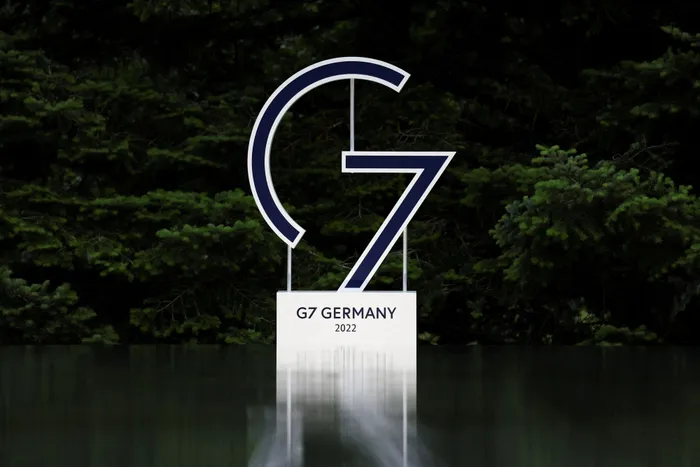Should Africa be happy about G7’s new offer?

Picture: Lukas Barth/Reuters - G7 leaders have detailed plans to mobilise $600bn in funding for the developing world in a move seen as a counter to China's Belt and Road plan, says the writer.
Dr Zhu Ming
In recent years, we could easily observe one quite interesting thing from the West; infrastructure investment in the developing region has been popular again and the West’s promises have become more generous than before. The most recent case is this year’s G7 summit.
G7 leaders have detailed plans to mobilise $600 billion in funding for the developing world in a move seen as a counter to China’s Belt and Road (BRI) plan.
The Partnership for Global Infrastructure and Investment (PGII) relaunches a scheme unveiled at last year’s G7 talks in England. The initiative will be geared towards tackling climate change, improving global health, achieving gender equity and building digital infrastructure.
But it is a high possibility that the PGII would neither help the indeed poor countries which is its public goal nor contain Beijing’s BRI which is its hidden goal, the author believes.
Firstly, it is quite possible that the indeed poor countries (eg many low-income African countries) would not be major receipts of the PGII. According to President Joe Biden’s G7 summit remark, the receipts are not only for developing countries but middle and low-income countries.
During the summit, when some of the highlighted initiatives were uncovered, Romania was mentioned as the earliest receipt country, this has been one quite clear but least-noticed signal that some part or even lion’s share of the investments would surely go to central and eastern European regions instead of Africa and other Global South poorer countries. The reason is quite simple, the rising geopolitical tension related to the Ukraine crisis.
In the next years, the West surely has to keep investing huge military and economic resources in Ukraine and its neighbouring EU / Nato member states to contain Moscow. How large the total investment towards this region is unclear yet. But only the official reconstruction plan of Ukraine which has been proposed by Kyiv is already as large as $750 billion.
What’s more, the PGII initiative has its internal fund-raising paradox. When Biden finished his recent Middle East trip in July, he successfully lobbied some GCC (Gulf Co-operation Council) partners to invest a total of $3 billion in projects that align with PGII goals to invest in critical infrastructure in low- and middle-income countries.
It seems that the initial promise of $600bn is a bit too ambitious beyond the G7 bloc’s capacities, that is why Biden has to look for external resources not just inside G7 but outside G7 including rich GCC partners. Such a mechanism could be labelled as the G7+ model.
But none of these Washington’s GCC partners is willing to be Beijing’s rival or even enemy. In fact, Beijing’s all-dimensional co-operation with the Gulf region has reached the highest level which is never seen before. The $3 billion investment package would not be a boost to PGII’s anti-China purpose but weaken it. In simple words, when the PGII money pool expands with more non-G7 finance flowing in, its “BRI killer” goal would be harder to reach since most non-G7 countries have few interests in such meaningless US-China geopolitical competition.
Lastly, the PGII plan has a vital flaw of insufficient accountability mechanisms. Since the financial resources would be from both G7+ member states and private investors, there have been no detailed mandatory contribution plans among the G7+ yet.
What is more, not any concrete protocols to regulate the G7+ actors to keep their promises either. In conclusion, the risks of breaking the promise are still there since the G7+ could escape its responsibilities without making any de jure promises related to themselves.
Dr Zhu Ming, Center for West-Asian and African Studies, Shanghai Institutes for International Studies of China; Non-resident Scholar of Centre for Africa-China Studies, University of Johannesburg.
This article is original to the The African. To republish, see terms and conditions.